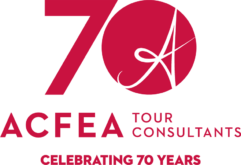An interview with Stephen Sano, chair of the music department at Stanford University. In June, he took the Stanford Chamber Chorale and Taiko Ensemble on a tour of the United Kingdom.
What was unique about touring with two very different ensembles?
Logistics was the biggest challenge, since none of the performance events between the two groups overlapped. We planned carefully for this with dedicated logistics support for each group – specifically, people who knew exactly what kind of support would be needed for the unique needs of each ensemble. The one frustration for me was that I wasn’t able to be at all the performance events for each group!
Why did you choose the United Kingdom for this tour?
Our Chamber Chorale tours to the UK every fourth year. I have a special fondness for British choral repertoire since I learned much of it as a boy treble singing in the choral tradition of the men and boys choir. And singing that repertoire in situ is always an incomparable experience for our students; there’s nothing like singing Byrd in Lincoln Cathedral, or the Stanford Motets in Trinity College Chapel in Cambridge. Or singing Jonathan Harvey’s work in St. John’s College Chapel, Cambridge, which we were honored to do this tour. Or singing Evensong in one of the great British cathedrals, giving our students the chance to understand the development of liturgy and music in that particular tradition. We were originally scheduled to do a UK tour in 2011, but Stanford Taiko received an invitation from Kagemusha Taiko, one of the UK’s finest taiko ensembles, to headline the opening concert of the UK Taiko Festival this summer. So we decided to take both ensembles on tour together this year.
What surprised you the most about the tour?
I was (thankfully) surprised that the dollar remained reasonably strong for the duration of our tour. Seriously, I think the absolutely unbridled enthusiasm the audiences showed for the taiko art form was so wonderful to see. Since the context for the art form is completely different compared to the States – i.e., there is no Japanese American community and its evolutionary activism that was so contributory to the growth of the art form here – it was thrilling to see British audiences so completely captivated by the drumming.
What were the tour highlights for the group? Were they different for the Chamber Chorale and Stanford Taiko?
Learning to live and perform on a professional touring schedule is always a great experience for students. There is a level of artistry and professionalism that happens on tour that’s unique and pretty incomparable. For the Chorale, our residency at Exeter Cathedral was an incredibly rich experience. They really got to know that building and had the opportunity to dig into Evensong repertoire – psalm chant, responses and music written for the optimized configuration of decani and cantoris. For Stanford Taiko, the opportunity to bring North American taiko to British audiences, most of whom had never experienced it before, was definitely a highlight. Also the teaching – for our taiko students to have the opportunity to teach some of the UK’s most gifted music students in workshop settings was very special, indeed.
Do you have any advice for other multi-talented directors who might be considering taking more than one group on tour?
Hahaha – not multi-talented! We actually had a good foundation to build upon from our 2008 tour when we took 350 Stanford musicians (Chamber Chorale, Choral Union, Orchestra, and Stanford Taiko) to China for three weeks. Compared to that, this was a much more streamlined affair!

